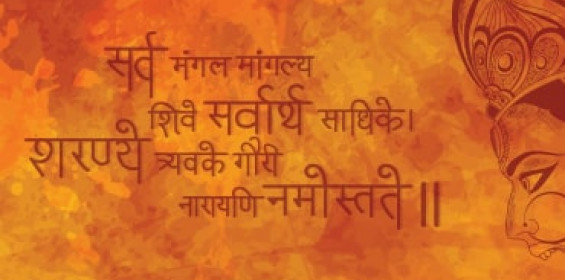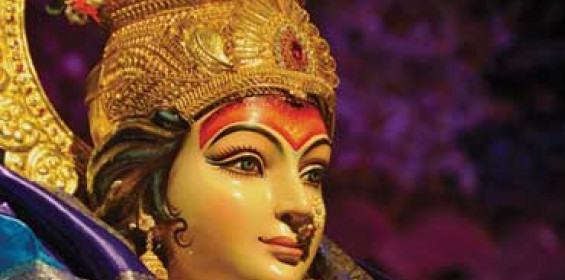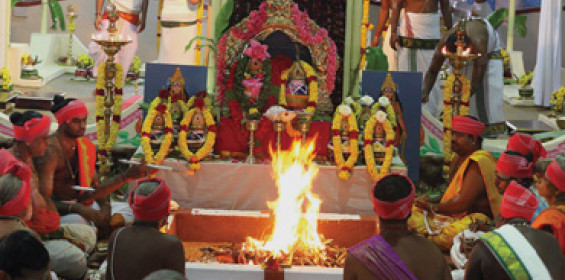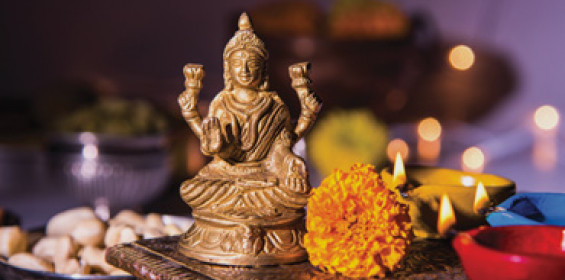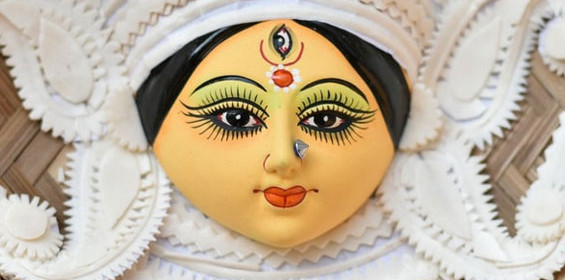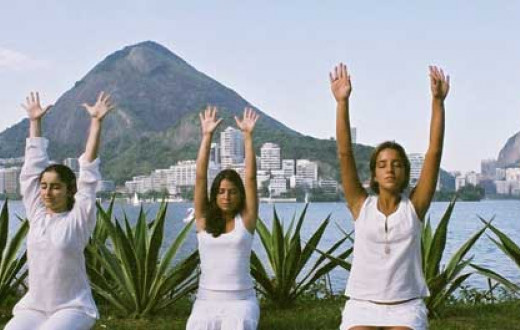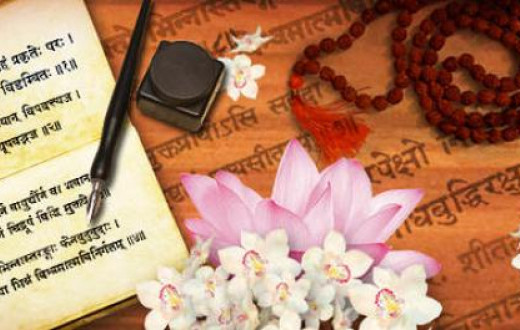Significance of Navratri: Why is Navratri Celebrated?
Significance of Navratri
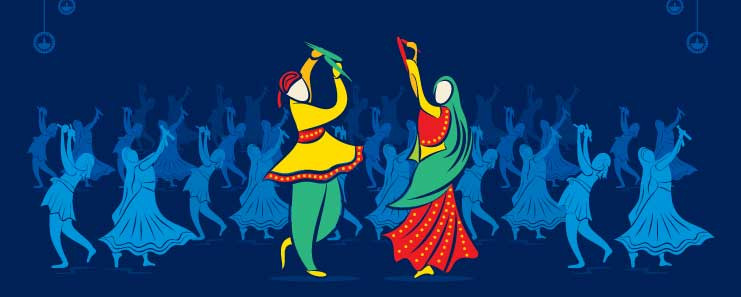
'Navratri' means 'nine nights.' 'Nava' means 'nine,’ and 'Ratri' means 'night.'
Night provides rest and rejuvenation. During the night, you turn inwards through sleep, and you wake up feeling refreshed and rested in the morning. In the same way, Navratri or the ‘nine nights’ is that time of the year when you get the chance to experience deep rest. This deep rest brings freedom from all kinds of botherations, deep relaxation, and creativity.
Fasting, meditation, prayers, and other spiritual practices performed during this period help bring about this deep rest. Even refraining from over-indulging in sense objects during this time aid the process of attaining deep rest.
Our spirit: The source of deep rest
Our spirit has existed since time immemorial. It is the boundless and the eternal source of energy of this universe. During Navratri, even the subtle energies in the environment enhance and assist one’s experience of reaching the spirit.
The prayer, chanting, and meditation performed during Navratri connect us with our spirit. Getting in touch with the spirit invokes positive qualities within us and destroys laziness, pride, obsession, cravings, and aversions. When stress in the form of negative emotions is destroyed, we experience the deep rest of the transforming nine nights.
Devi Puja: Honoring the Omnipresent Energy
Devi represents the omnipresent cosmic Energy. The whole Creation is permeated by this Energy. The prosperity that we enjoy in our daily lives is a manifestation of Devi. Mother Divine serves us in so many forms. The forms of our mother, father, friends, husband, wife, son, daughter and also the Guru. The revolving planets and the moon is Devi performing aarti to us. Through puja we say, “Oh Mother, whatever you give to me I give back to you. For example, during the Puja, we offer food grains to Devi as Nature provides us with food. Devi Puja is an expression of expanded consciousness showing reverence to the whole Creation. The puja that we perform during the 9 days of Navratri is a way of honouring the Devi and showing our gratitude to the Mother Divine. While attending the puja we give up all our worldly activities for a while and enter into deep meditation.
Gurudev Sri Sri Ravi Shankar says, “There is Devi energy (Shakti) within all of us. Devi is not somewhere else, not in some other world. If we sit deep in meditation, the glow within the body will brighten, and will expand and spread outside. This is Devi Puja.”
Navadurga and significance of each day of Navratri
Devi is worshipped in 9 forms known as Navadurga. The significance of each day of Navratri is attached to a form of the Mother Divine.
First Day – Shailaputri

On the first day, Devi Shailaputri is worshipped. In this form, Devi Parvati is revered as the daughter of Himalaya Raja. Shaila means extraordinary or rising to great heights. The divine consciousness represented by Devi always surges from the peak. On this first day of Navratri, we propitiate Devi Shailaputri so that we may also attain the highest state of consciousness.
Second Day – Brahmacharini
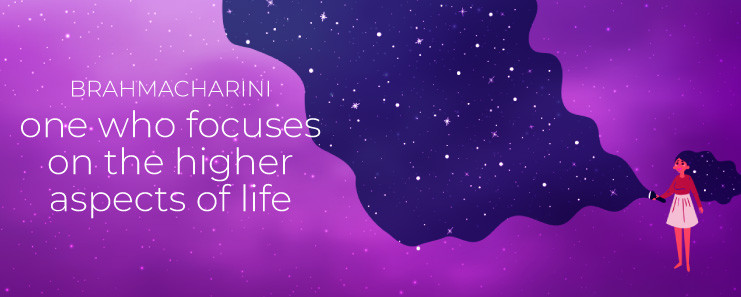
On the second day, Devi Brahmacharini is propitiated. Devi Brahmacharini is the form of Devi Parvati in which she undertook severe penance to have Lord Shiva as Her consort. Brahma means divine consciousness and achar refers to behavior. Brahmacharya is the behavior or an act that is established in divine consciousness. This day is especially sacred to meditate and explore our inner divinity.
Third Day – Chandraghanta

On the third day, Devi Chandraghata is the presiding Devi. Chandraghata is the special form that Devi Parvati assumed at the time of Her marriage with Lord Shiva. Chandra refers to the moon. The moon represents our mind. The mind is restless and keeps moving from one thought to another. Ghanta is a bell which produces only one kind of sound always. The significance is that when our mind is established at one point, i.e Divine, then our prana (subtle life force energy) gets consolidated leading to harmony and peace. This day thus signifies withdrawing from all vagaries of the mind, with a single focus on Mother Divine.
Fourth Day – Kushmanda
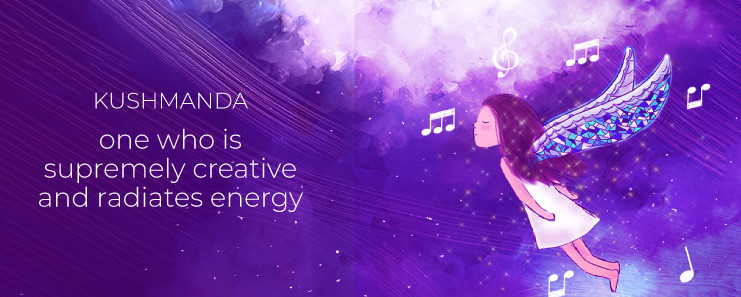
On the fourth day, Mother Divine is worshipped as Devi Kushmanda. Kushmanda means a pumpkin. Ku means little, ushma means energy and anda refers to egg. This entire universe which arose from the cosmic egg (hiranyagarbha) is manifested from an infinitesimal energy of Devi. A pumpkin also represents prana as it has the unique property of absorbing and radiating prana. It is one of the most pranic vegetables. On this day, we worship Devi Kushmanda who showers us with Her divine energy.
Fifth Day - Skandamata
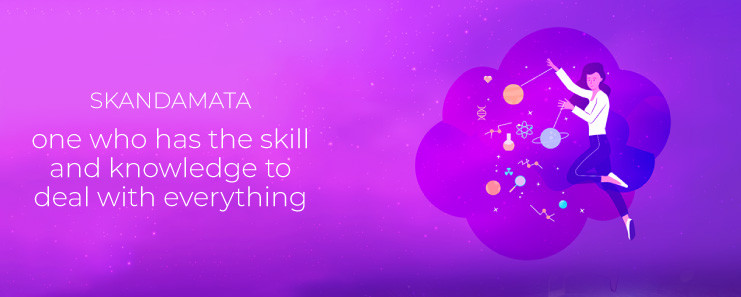
Skandamata means Mother of Skanda. On the fifth day, the motherly aspect of Devi Parvati is worshipped. In this form, she is the mother of Lord Karthikeya. She represents motherly affection (vatsalya). Worshiping this form of Devi brings abundance of wisdom, wealth, power, prosperity and liberation.
Sixth Day – Katyayani
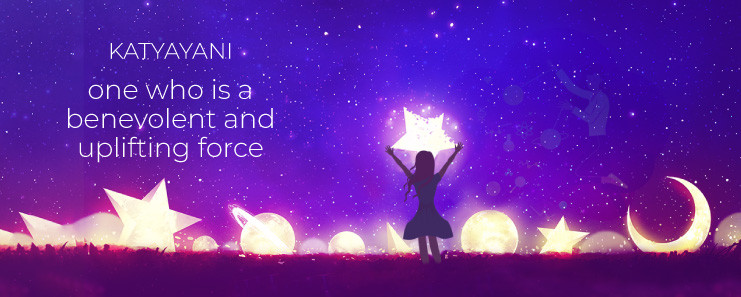
On the sixth day, Devi manifests as Katyayani. It is a form that Mother Divine assumed to annihilate the demonic forces in the universe. She was born from the anger of the gods. She is the one who slayed Mahishasura. As per our scriptures, anger that supports dharma (righteousness) is acceptable. Devi Katyayani represents that divine principle and form of the Mother Divine who is behind natural calamities and disasters. She is the anger that arises in creation to restore balance. Devi Katyayani is invoked on the sixth day to put an end to all our inner foes that are an obstacle on the path of spiritual evolution.
Seventh Day – Kalaratri

On the seventh day, we invoke Devi Kalaratri. Mother Nature has two extremes. One is terrifying and devastating. The other is beautiful and serene. Devi Kalaratri is a fierce form of Devi. Kalaratri represents the dark night. Night is also considered an aspect of Mother Divine as it is night that brings solace, rest and comfort to our souls. It is only at night that we get a glimpse of infinity in the skies. Devi Kalaratri is that infinite dark energy that houses innumerable universes.
Eighth Day – Mahagauri

Devi Mahagauri is that which is beautiful, gives momentum and freedom in life. Mahagauri represents the beautiful and serene aspect of Nature. She is that energy which propels our lives and also liberates us. She is the Devi who is worshipped on the eighth day.
Ninth Day - Siddhidatri

On the ninth day, we worship Devi Siddhidatri. Siddhi means perfection. Devi Siddhidatri brings perfection in life. She makes the impossible, possible. She takes us beyond the ever reasoning logical mind to explore the realm beyond time and space.
Frequently Asked Questions
The world we are living in is a fast-paced one with hardly any time for oneself. The nine days of Navratri are designed to melt down the year-long tiredness and restore mental cool. If one is a little heedful to follow a sattvic diet and meditate regularly there is the possibility of a deep body-mind detox in just a span of nine days.
The Art of Living live Navratri celebrations can be a nice chance to soak in the chants and meditate effortlessly. All you got to do is click the live webcast button and sit back relaxed with your eyes closed for a few minutes and meditate over the chants of Devi.
Navratri can bring a turning point to your thoughts, mind, and body by helping you undergo a deep rejuvenation.
The word ratri means to give you deep rest from three types of botherations. The adi vautik, worldly botheration, adi daivik, the Divine one, and adi adhyatmik, the botherations of the soul. So, Navratri is a time of prayer and rejuvenation because a deep rest allows you to heal from all your botherations. Just like how it takes nine months for a child to be born, the same way these nine days of Navratri are like coming out from a mother's womb once again, recharged and renewed.
Here are the nine days of Navratri with their respective dates:
First Day (26th September) - Pratipada
Second Day (27th September) - Dwitiya
Third-Day (28th September) - Tritiya
Fourth Day (29th September) - Chaturthi
Fifth Day (30th September) - Panchami
Sixth Day (01st October) - Shashti
Seventh Day (02nd October) - Saptami
Eighth Day (03rd October) - Ashtami
Ninth Day (04th October) - Navami
The following are the recommended colors to follow for each day of Navratri. These colors are believed to enhance your positivity and harmony for the day:
First Day (7th October) - Pratipada - Yellow
Second Day (8th October) - Dwitiya - Green
Third-Day (9th October) - Tritiya - Grey
Fourth Day (9th October) - Chaturthi - Orange
Fifth Day (10th October) - Panchami - White
Sixth Day (11th October) - Shashti - Red
Seventh Day (12th October) - Saptami - Royal Blue
Eighth Day (13th October) - Ashtami - Pink
Ninth Day (14th October) - Navami - Purple
The whole structure of Nature can be fundamentally categorized into matter or Prakriti (the manifest) and spirit or Purusha (the unmanifest). Durga shakti is the manifestation of the moola Prakriti (primordial energy of Mother Nature) and she is fundamentally representative of three gunas (or qualities of manifest matter) namely sattva, rajas, and tamas. From the primordial energy of Mother Nature (or Goddess Durga) emerged the three devis, Maha Kali, Maha Lakshmi, and Maha Saraswati each representing one of the three gunas : tamas, rajas, and sattva respectively. So, Maa Kaali is the manifestation of the same primordial energy that the scriptures depict as Durga shakti.
The legend behind Navratri is that once when the obnoxious rule of Mhahishasur was getting to the nose of the devatas, they prayed for a force so invincible that it could slay down the immortal demon-ruler. The trinity (Brahma, Vishnu, and Mahesh) together concentrated their powers, and from an illuminating pillar of energy emerged a glorious Supreme Being, the source of power and strength, called Goddess Durga.
But Mashishasura was sure of his victory as he believed he could beat her hands down. He underestimated the feminine power. Soon a fierce ravaging battle was instigated between the Devi and the demon and he couldn’t escape the blows from her trident. He started changing his form so he could trick her into losing but soon when he took the form of a buffalo, the Devi slewed him with her trident (trishul) and achieved victory.
Since then this day is marked as a victory day and celebrated as Vijaya Dashami. The nine days of Navratri depict Devi’s spectacular skills in tackling the deadliest demons of that time.
Navratri is hence, a significant time for devotees to fast, meditate, and pray to the Divine Mother for inner strength and skills to combat their own demons (or problems) of life.
The nine nights of Navratri are said to be precious as there are subtle energies in the creation that are enriched at this time of the year. We honour and worship the omnipresent Devi energy during Navratri. Devi or the Divine Mother is the energy that has given birth to the entire universe including the celestial stars far away and the subtle mind and its emotions. Navratri is the time when this energy can be tapped. It's time to feel your soul! When stress in the form of negative emotions is destroyed, we experience the deep rest of the transforming nine nights.
Dussehra symbolizes the great victory of Goddess Durga over the terrible demon Mahishasura who was terrorizing the world in the guise of a water buffalo. Durga shakti is the life force within us and Mahishasura symbolizes lethargy, inertia, pride, obsession, cravings, and aversions. When your intellect is free from these negative tendencies, you feel lighter. There is happiness and celebration. This is victory in the truest sense. Through the mantras also you can bring out all the positive energy.
Join live Navratri 2022 celebrations.
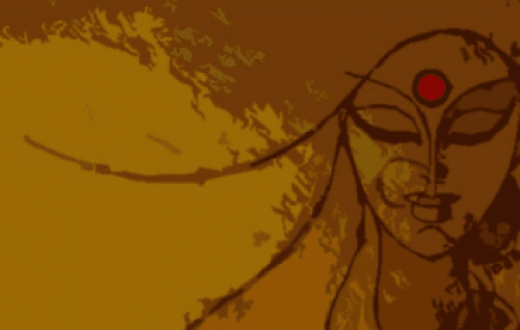
The Nav Durga
Discover the nine forms of Divine energy that constitute our life force.
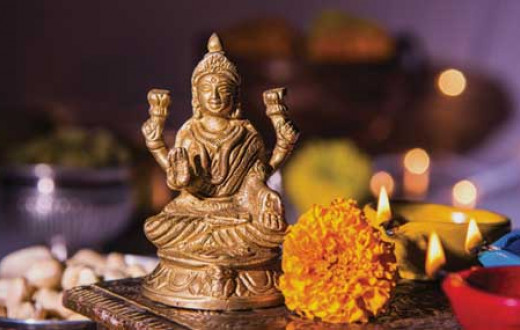
Significance of Ayudha puja
Ayudha puja is performed to honor and feel grateful for all the instruments that add meaning to our life.
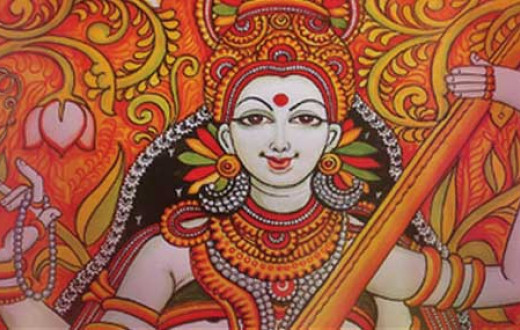
Lalitha - The vibrant One
Get to know Lalitha – the scintillating and dynamic expression of the Self, as described in the Lalitha Sahasranama.
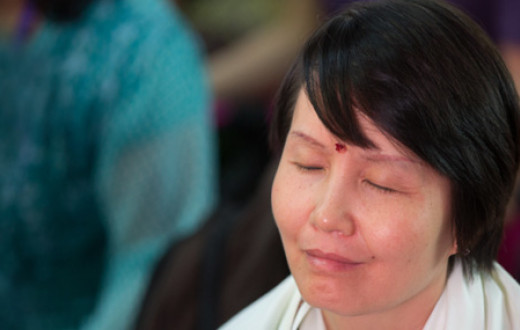
What to do during Navratri
Transition from sound to silence, from movement to stillness with this guide on what to do during Navratri.

Tips for fasting
Fasting during Navratri is highly auspicious. Fast the right way with our guide on tips to fasting during Navratri.

